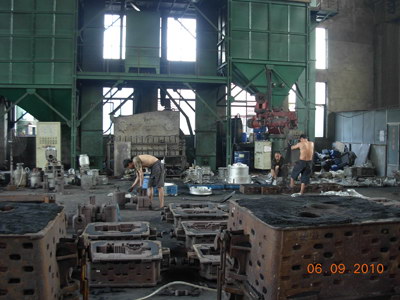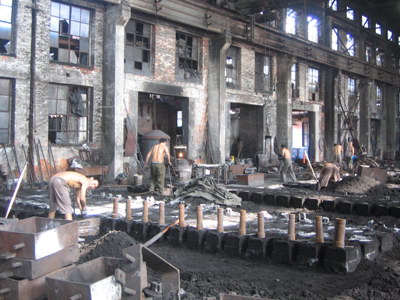| |
China Metal Casting Foundries, Current Situation,
Production and Development
1.) In general terms, how would you
describe the state of the metal casting / foundry industry in China
today? (Robustness, growth, trends etc.)
Metal castings are the base of industry and residential, so still
and will have good demand from worldwide, good market will mean the
long term development of metal foundries, so currently, the
development of metal foundries in China is good. However, the total
amount of foundries will be reduced because of the government
control for environment protection and fierce competition. Some
foundries will become larger, and some small foundries will be
vanished.
2.) If your company has any involvement in the Chinese foundry
industry or market, please can you briefly summarize it. What
advantages does operating in China bring your company?
We are a metal foundry, so I can not answer this question; however,
I believe that our clients reduced their production costs when they
bought metal castings from us.
3.) Are there any particularly geographical areas of China where
the foundry industry is growing or developing particularly strongly?
If so, why is this?
The main locations for metal foundries are Ningbo, Shandong,
Liaoning, Hebei. These four plates have many iron and steel
foundries. I think it is because these locations can reach main raw
materials (pig iron) easier, and had long history for heavy
industrial manufacturing. Take Liaoning as example, it is the main
industrial base when new China founded.
4.) In terms of production, is the Chinese foundry industry
focusing on any particular areas right now? (Automobiles, heavy
castings etc.)
No, there is no distinct focus for types of metal castings in these
areas. This is not good for development, but this is current
situation.
5.) What is the state of health and safety in Chinese foundries?
The protection to workers health and safety in China foundries is
not good. The protection is very preliminary such as safety goggles,
work clothes, face mask etc. The warning sign, safety operation
guide and better and more protection are not enough.
6.) Efforts are being made to reduce the environmental impact of
China's foundry industry. In your opinion, how successful have these
been? Is low emissions / waste minimization technology being used /
implemented widely?
Yes, our government is investing to control and improve the
environmental impact, however, the improvement is still very small,
China is too big and too many metal foundries and other industrial
factories, so the improvement speed will be slower than other
countries.
7.) In very general terms, how does the technology employed by
the Chinese foundry industry compare with that in Europe or North
America? Is China still playing catch-up or are there some very
sophisticated Chinese foundries out there already?
Yes, there are some very large foundries, who are using very state
of art technology and also control pollution very well, however,
most of middle and small foundries are still much slower than those
in Europe and America for this aspect.
8.) How do you see the Chinese foundry industry developing over
the next 5-10 years? What are the major challenges the Chinese
foundry industry faces going forwards? Will there be more
partnerships with Western companies?
In the next years, some small and middle foundries will be vanished
because of government control and bad economy. Most clients will
choose the better foundries or choose the foundries in India for
lower prices.
However, because other countries are also controlling pollution for
metal foundries, but the total demand volume will not reduce, so the
buyers will still keep their eyes on Chinese foundries. The survived
metal foundries will not need to worry about the markets. Therefore,
the main challenge will be how to guarantee the quality, how to
reduce the production costs, how to improve the pollution impact,
how to keep the stable manpower. The stable quality will be the
largest challenge.
Although partnership with European and American are still very few
now, this should be a direction. The overseas buyers could invest
some to the China foundries, so they can get lower prices and stable
supplies. The metal foundries overseas could invest to some
foundries in China, so they could move their production orders to
China.



|
|
